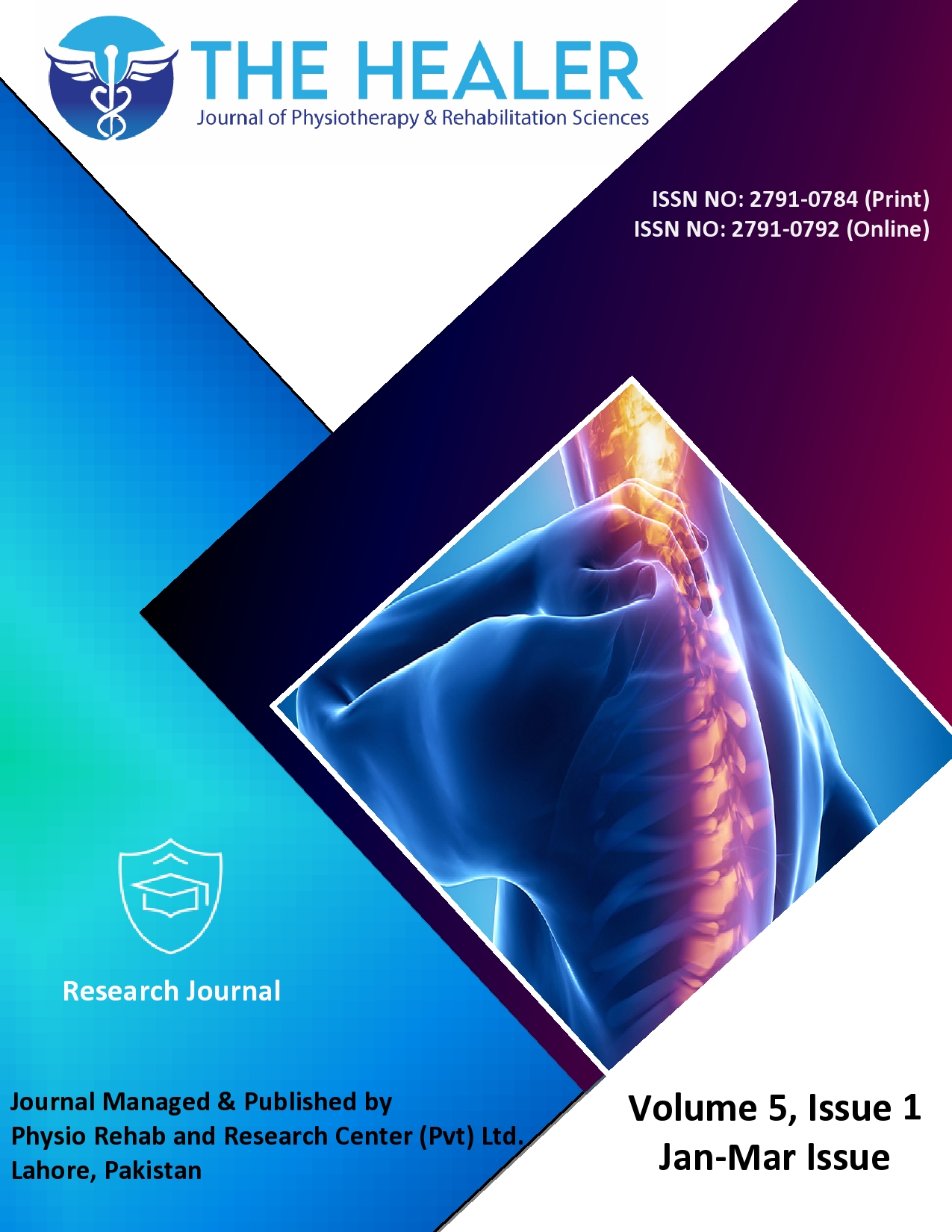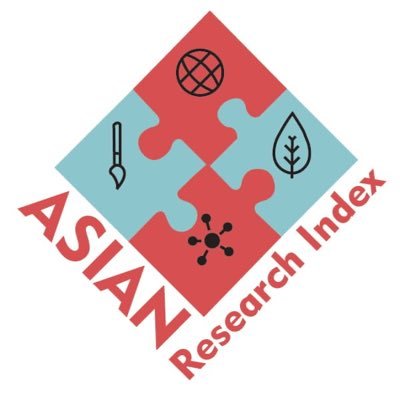Effects of Respiratory Muscle Training in Patients with Cardiomyopathy: Systematic Review
DOI:
https://doi.org/10.55735/7115a637Keywords:
Cardiomyopathy , Respiratory muscle training , Systematic reviewAbstract
Background: Cardiomyopathy is a major global cause of chronic heart failure, often resulting in exercise intolerance, dyspnea, and reduced quality of life. Respiratory muscle weakness is common in these patients. Respiratory muscle training is considered a beneficial non-pharmacological intervention to enhance respiratory muscle strength, improve exercise tolerance, and support overall patient well-being. Objective: To evaluate the effects of respiratory muscle training on inspiratory muscle performance, exercise capacity, dyspnea, and health-related quality of life in cardiomyopathy patients and outcomes. Methodology: This systematic review involved a comprehensive search up to September 2025 using PubMed, EMBASE, Cochrane Central, and Google Scholar. Randomized controlled trials, clinical trials, systematic reviews, and meta-analyses on cardiomyopathy and chronic heart failure patients undergoing respiratory muscle training were included. Primary outcomes assessed were the 6-minute walk test, peak oxygen consumption, maximal inspiratory pressure, dyspnea, and health-related quality of life. Results: This review included 15 randomized controlled trials and 9 systematic reviews with meta-analyses. Respiratory muscle training demonstrated improvements in maximal inspiratory pressure and functional outcomes, including peak oxygen consumption and six-minute walk distance, particularly in studies with intervention durations of at least 8–12 weeks at moderate to high intensities (40–60% of maximal inspiratory pressure). Notable reductions in dyspnea and improvements in health-related quality of life were also reported. The included meta-analyses consistently supported the benefits of respiratory muscle training, especially in cardiomyopathy patients with baseline inspiratory muscle weakness. Overall, respiratory muscle training was safe with no major adverse effects. Conclusion: This review concludes that respiratory muscle training is a safe and effective adjunct therapy for cardiomyopathy, providing clinical improvements in inspiratory muscle strength, exercise tolerance, and health-related quality of life, while helping to relieve symptoms without causing harm.
Downloads
References
1. Ibrahim HK. Global trends in cardiovascular mortality and risk factors: insights from WHO and Global Burden of Disease data. Libyan Open University Journal of Medical Sciences and Sustainability 2025; 1(1): 28–36.
2. Bosnak-Guclu M, Arikan H, Savci S, et al. Effects of inspiratory muscle training in patients with heart failure. Respiratory Medicine 2011; 105(11): 1671–81.
https://doi.org/10.1016/j.rmed.2011.05.001
3. von Haehling S, Arzt M, Doehner W, et al. Improving exercise capacity and quality of life using non‐invasive heart failure treatments: evidence from clinical trials. European Journal of Heart Failure 2021; 23(1): 92–113.
https://doi.org/10.1002/ejhf.1838
4. Vieira FC, de Melo Marinho PÉ, Brandão DC, e Silva OB. Respiratory muscle strength, the six‐minute walk test, and quality of life in Chagas cardiomyopathy. Physiotherapy Research International 2014; 19(1): 8–15.
https://doi.org/10.1002/pri.1550
5. Zhang F, Zhong Y, Qin Z, Li X, Wang W. Effect of muscle training on dyspnea in patients with chronic obstructive pulmonary disease: A meta-analysis of randomized controlled trials. Medicine 2021; 100(9): e24930.
https://doi.org/10.1097/MD.0000000000024930
6. Chung Y, Huang TY, Liao YH, Kuo YC. 12-week inspiratory muscle training improves respiratory muscle strength in adult patients with stable asthma: a randomized controlled trial. International Journal of Environmental Research and Public Health 2021; 18(6): 3267.
https://doi.org/10.3390/ijerph18063267
7. McConnell TR, Mandak JS, Sykes JS, Fesniak H, Dasgupta H. Exercise training for heart failure patients improves respiratory muscle endurance, exercise tolerance, breathlessness, and quality of life. Journal of Cardiopulmonary Rehabilitation and Prevention 2003; 23(1): 10–16.
https://doi.org/10.1097/00008483-200301000-00003
8. Campos NG, Marizeiro DF, Florêncio ACL, et al. Effects of respiratory muscle training on endothelium and oxidative stress biomarkers in hemodialysis patients: a randomized clinical trial. Respiratory Medicine 2018; 134: 103–109.
https://doi.org/10.1016/j.rmed.2017.12.005
9. Heymans S, Lakdawala NK, Tschoepe C, Klingel K. Dilated cardiomyopathy: causes, mechanisms, and current and future treatment approaches. The Lancet 2023; 402(10406): 998–1011.
https://doi.org/10.1016/S0140-6736(23)01241-2
10. Ciarambino T, Menna G, Sansone G, Giordano M. Cardiomyopathies: an overview. International journal of molecular sciences 2021; 22(14): 7722.
https://doi.org/10.3390/ijms22147722
11. Kasawara KT, Castellanos MM, Hanada M, Reid WD. Pathophysiology of muscle in pulmonary and cardiovascular conditions. Cardiopulmonary Physical Therapy Journal 2018; 30(1): 1.
https://doi.org/10.1097/CPT.0000000000000096
12. Fabero-Garrido R, Del Corral T, Angulo-Díaz-Parreño S, et al. Respiratory muscle training improves exercise tolerance and respiratory muscle function/structure post-stroke at short term: a systematic review and meta-analysis. Annals of Physical and Rehabilitation Medicine 2022; 70(5): 101596.
https://doi.org/10.1016/j.rehab.2021.101596
13. Kirkman DL, Lee DC, Carbone S. Resistance exercise for cardiac rehabilitation. Progress in Cardiovascular Diseases 2022; 70: 66–72.
https://doi.org/10.1016/j.pcad.2022.01.004
14. Page MJ, McKenzie JE, Bossuyt PM, et al. The PRISMA 2020 statement: an updated guideline for reporting systematic reviews. BMJ (Clinical Research Edition) 2021; 372: n71.
https://doi.org/10.1136/bmj.n71
15. Fabero-Garrido R, Del Corral T, Plaza-Manzano G, et al. Effects of respiratory muscle training on exercise capacity, quality of life, and respiratory and pulmonary function in people with ischemic heart disease: systematic review and meta-analysis. Physical Therapy 2024; 104(3): pzad164.
https://doi.org/10.1093/ptj/pzad164
16. Nguyen NM, Vancraeynest D, Pouleur AC, et al. The impact of isolated inspiratory muscle training on exercise capacity, dyspnea, and quality of life in heart failure patients: a systematic review and meta-analysis. Physical Therapy Reviews 2025; 30(2): 93–105.
https://doi.org/10.1080/10833196.2025.2475643
17. Beaujolin A, Mané J, Presse C, et al. Inspiratory muscle training intensity in patients living with cardiovascular diseases: a systematic review. Hearts 2024; 5(1): 75–90.
https://doi.org/10.3390/hearts5010006
18. Li J, Chen L, Wang L. Impact of different exercise modalities on physical function and quality of life in patients with heart failure. Journal of Multidisciplinary Healthcare 2024; 17: 2551–2559.
https://doi.org/10.2147/JMDH.S465578
19. Rantepadang A, Tendean AF, Padaunan E, et al. Effects of exercise on muscle strength and VO2 peak in patients with pulmonary hypertension: a systematic review and meta-analysis. Pacific Rim International Journal of Nursing Research 2025; 29(2): 306–25.
https://doi.org/10.60099/prijnr.2025.271912
20. López-de-Uralde-Villanueva I, Fabero-Garrido R, Rodríguez de Rivera EA, et al. New protocol for evaluating maximum inspiratory pressure: concurrent validity and test-retest reliability. Physical Therapy 2024; 104(11): pzae124.
https://doi.org/10.1093/ptj/pzae124
21. Kim SH, Shin MJ, Lee JM, et al. Effects of a new respiratory muscle training device in community-dwelling elderly men: an open-label, randomized, non-inferiority trial. BMC Geriatrics 2022; 22(1): 155.
https://doi.org/10.1186/s12877-022-02828-8
22. Kaeotawee P, Udomittipong K, Nimmannit A, et al. Effect of threshold inspiratory muscle training on functional fitness and respiratory muscle strength compared to incentive spirometry in children and adolescents with obesity: a randomized controlled trial. Frontiers in Pediatrics 2022; 10: 942076.
https://doi.org/10.3389/fped.2022.942076
23. Vazquez-Gandullo E, Hidalgo-Molina A, Montoro-Ballesteros F, et al. Inspiratory muscle training in patients with chronic obstructive pulmonary disease (COPD) as part of a respiratory rehabilitation program implementation of mechanical devices: a systematic review. International Journal of Environmental Research and Public Health 2022; 19(9): 5564.
https://doi.org/10.3390/ijerph19095564
24. Manifield J, Winnard A, Hume E, et al. Inspiratory muscle training for improving inspiratory muscle strength and functional capacity in older adults: a systematic review and meta-analysis. Age and ageing 2021; 50(3): 716–724.
https://doi.org/10.1093/ageing/afaa221
25. Anwar M, ul Ain Q, Fatimah A, et al. Effects of Buteyko breathing technique versus diaphragmatic breathing on exercise capacity and quality of life in patients with chronic obstructive pulmonary disease. Journal of Health and Rehabilitation Research 2024; 4(2): 1540–1546.
https://doi.org/10.61919/jhrr.v4i2.1101
26. Noumegni SR, Kaze AD, Fonarow GC, Echouffo-Tcheugui JB. Body mass index, exercise capacity and functional status in chronic heart failure. BMC Cardiovascular Disorders 2025; 25(1): 524.
https://doi.org/10.1186/s12872-025-04998-w
27. Abu-Odah H, Liu X-L, Wang T, et al. Modified Borg Scale (mBorg), the Numerical Rating Scale (NRS), and the Dyspnea-12 Scale (D-12): cross-scale comparison assessing the development of dyspnea in early-stage lung cancer patients. Supportive Care in Cancer 2025; 33(5): 442.
https://doi.org/10.1007/s00520-025-09474-x
28. Scherer TA, Spengler CM, Owassapian D, et al. Respiratory muscle endurance training in chronic obstructive pulmonary disease: impact on exercise capacity, dyspnea, and quality of life. American Journal of Respiratory and Critical Care Medicine 2000; 162(5): 1709–1714.
https://doi.org/10.1164/ajrccm.162.5.9912026
29. Habibzadeh H, Shariati A, Mohammadi F, Babayi S. The effect of educational intervention based on Pender’s health promotion model on quality of life and health promotion in patients with heart failure: an experimental study. BMC Cardiovascular Disorders 2021; 21(1): 478.
https://doi.org/10.1186/s12872-021-02294-x
30. Cuomo G, Di Lorenzo A, Tramontano A, et al. Exercise training in patients with heart failure: From pathophysiology to exercise prescription. Reviews in Cardiovascular Medicine 2022; 23(4): 144.
https://doi.org/10.31083/j.rcm2304144
31. Pandey A, Segar MW, Singh S, et al. Frailty status modifies the efficacy of exercise training among patients with chronic heart failure and reduced ejection fraction: an analysis from the HF-ACTION trial. Circulation 2022; 146(2): 80–90.
https://doi.org/10.1161/CIRCULATIONAHA.122.059983
32. Woods A, Gustafson O, Williams M, Stiger R. The effects of inspiratory muscle training on inspiratory muscle strength, lung function and quality of life in adults with spinal cord injuries: a systematic review and Meta-analysis. Disability and Rehabilitation 2023; 45(17): 2703–2714.
https://doi.org/10.1080/09638288.2022.2107085
33. Watson K, Egerton T, Sheers N, et al. Respiratory muscle training in neuromuscular disease: a systematic review and meta-analysis. European Respiratory Review 2022; 31(166): 220065.
https://doi.org/10.1183/16000617.0065-2022
34. Dsouza FV, Amaravadi SK, Samuel SR, et al. Effectiveness of inspiratory muscle training on respiratory muscle strength in patients undergoing cardiac surgeries: a systematic review with meta-analysis. Annals of Rehabilitation Medicine 2021; 45(4): 264–273. https://doi.org/10.5535/arm.21027
35. Lin SJ, McElfresh J, Hall B, Bloom R, Farrell K. Inspiratory muscle training in patients with heart failure: a systematic review. Cardiopulmonary physical therapy journal 2012; 23(3): 29–36.
36. Katayıfçı N, Güçlü MB, Şen F. A comparison of the effects of inspiratory muscle strength and endurance training on exercise capacity, respiratory muscle strength and endurance, and quality of life in pacemaker patients with heart failure: A randomized study. Heart & Lung: The Journal of Critical Care 2022; 55: 49–58.

Downloads
Published
License
Copyright (c) 2025 The Healer Journal of Physiotherapy and Rehabilitation Sciences

This work is licensed under a Creative Commons Attribution 4.0 International License.














